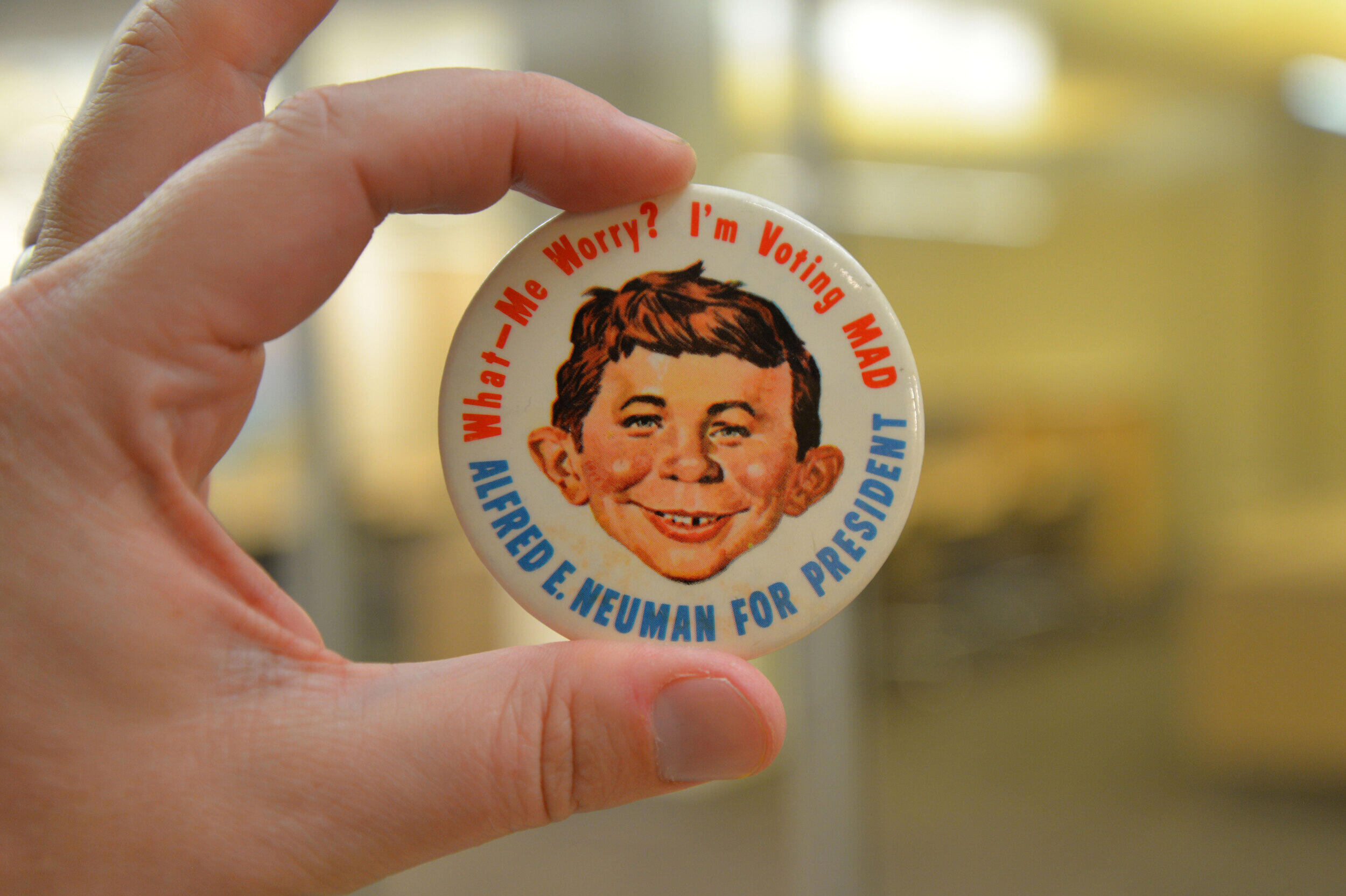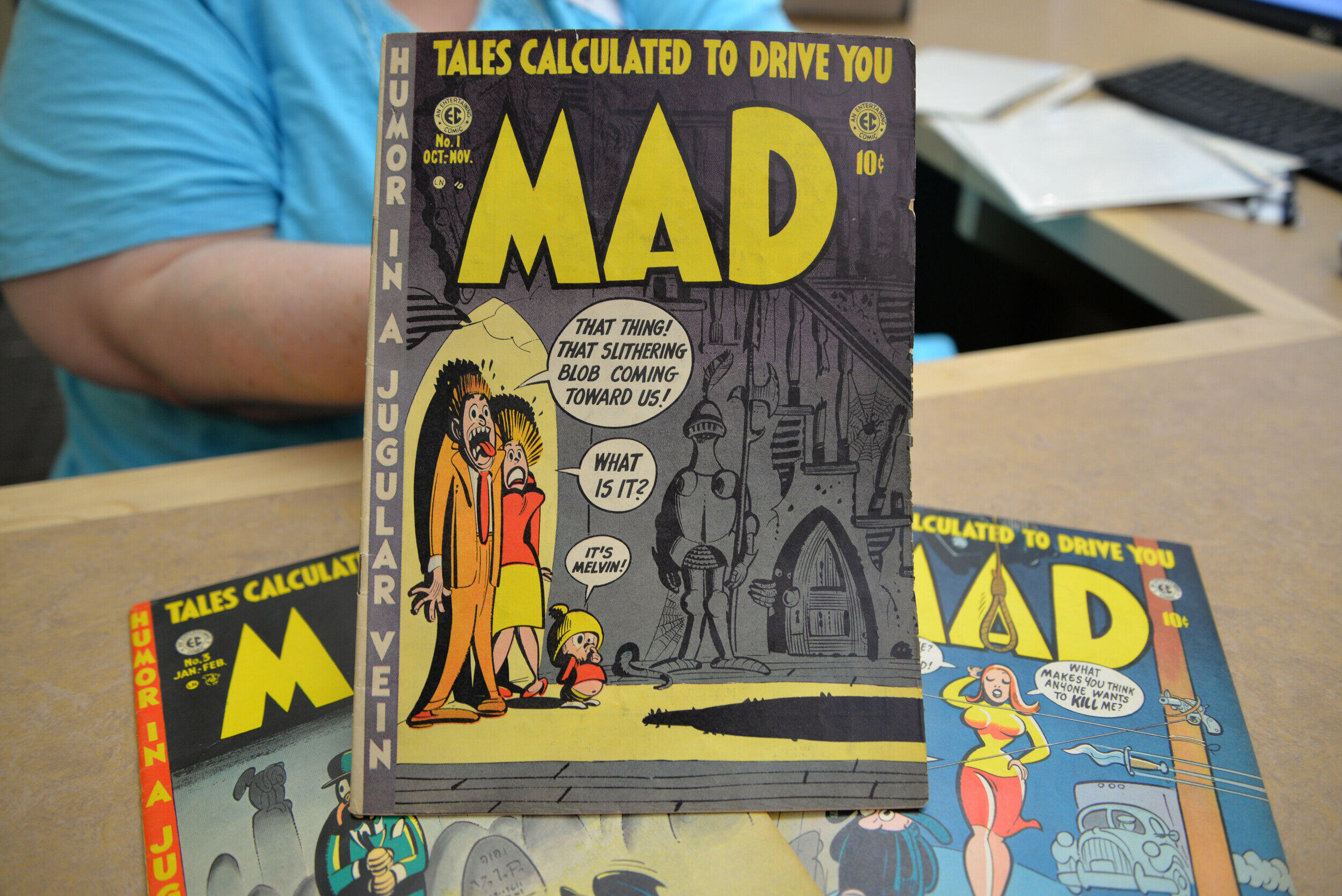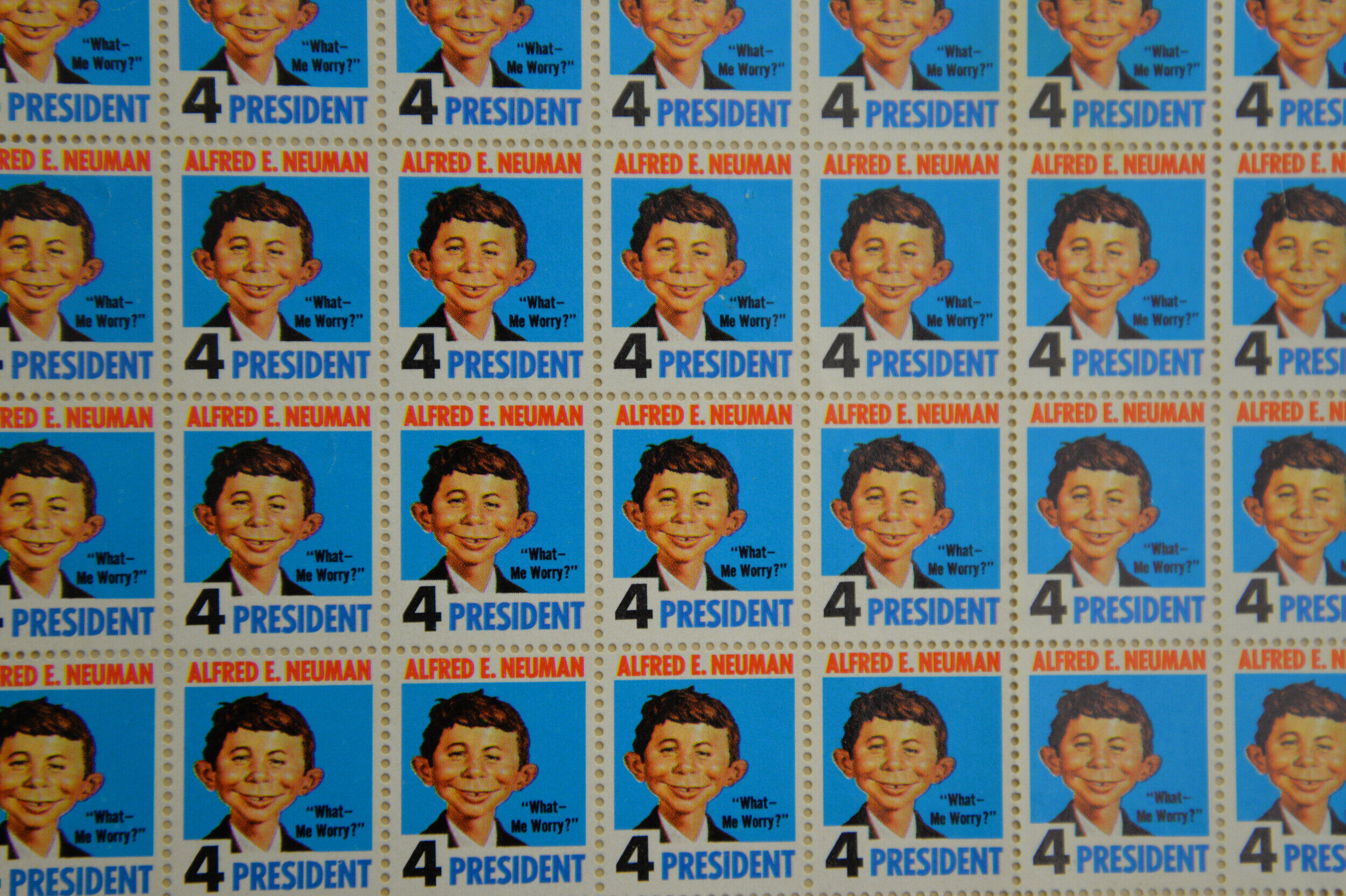
July 29, 2019
As Mad magazine disappears from newsstands, VCU’s comics expert looks back on its 67-year history
Share this story
The iconic satire publication Mad magazine announced this month that it would soon disappear from newsstands and end production of most new content.
The Comic Arts Collection in VCU Libraries’ Special Collections and Archives includes more than 175,000 items, including Mad’s first issue published in 1952, many other issues featuring the work of famous comics creators, several collections and art books, and a variety of Mad memorabilia such as Alfred E. Neuman buttons, stickers and even a doll.
Cindy Jackson, library specialist for comic arts at VCU Libraries, recently discussed Mad’s groundbreaking influence.
Looking back over the past 67 years, what influence do you see Mad as having had? Do you see its influence in pop culture today?
Mad was hugely influential in its heyday. It was the only magazine of its kind at the time, but it was soon imitated, but never duplicated. The writers and artists behind the magazine were not afraid to skewer beloved cultural icons like Archie or Superman, but the magazine is best known for its political satire during the 20-year period between the 1950s and 1970s. Mad reached its peak circulation in 1973 with over 2 million issues being sold a month. Without Mad breaking all the rules of politics, entertainment and popular culture, we would not have television shows like “Saturday Night Live,” “The Daily Show” or “Mad TV.”

When Mad was founded in the ‘50s, what was the wider context it emerged from? What was happening at the time that allowed a satirical magazine to be so successful?
The first issue of Mad is dated Oct./Nov. 1952. It made its debut at a tumultuous time in the comics industry. There were questions being raised about the content of comic books and the influence on impressionable readers. The full force of the Comics Code Authority was still a few years off, but the comics industry was starting to at least appear to be cleaning up its act through self-imposed regulation. Mad’s publisher, EC Comics, was at the forefront of the questionable content in comics with titles like “The Haunt of Fear,” “Tales from the Crypt” and “Vault of Horror,” among others. It seemed only natural that owner Bill Gaines would attempt to find a way to skirt the rules that were being imposed by the industry in publishing a comic that masqueraded as a magazine.
It wasn’t until issue No. 24 that Mad converted to a parody magazine format in order to keep editor Harvey Kurtzman, although he only remained for another year. Al Feldstein was installed as the new editor in 1956 and brought aboard contributors like Don Martin, Frank Jacobs, Mort Drucker and Sergio Aragones. These were the men who made Mad into a cultural touchstone.
How important was Mad in the history of comic arts?
Mad is important because until it ceased publication in July of this year it was the last remaining EC Comics title still in publication. And most importantly, since it was originally created to get around comic industry regulations, it outlasted the enforcement of the Comics Code Authority that began in 1954 and finally ended in January 2011.
What do you think led to Mad's waning influence and ending of publication?
Mad had a very good run, much better than most at 67 years in publication. The entertainment world has changed greatly since the early 1970s when the magazine was at the peak of its popularity. It is also a victim of its own success by making it OK to poke fun at politicians and pop culture. The popularity of cable television and the internet provided new outlets for satire and wider reach than print magazines. Sadly, Mad got lost in the din.
To see a gallery of VCU’s Mad collection, visit https://www.flickr.com/photos/vculibraries/albums/72157709723100917.

Subscribe to VCU News
Subscribe to VCU News at newsletter.vcu.edu and receive a selection of stories, videos, photos, news clips and event listings in your inbox.





